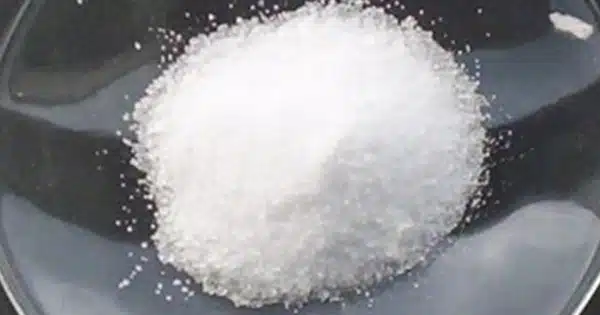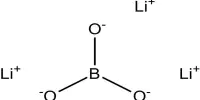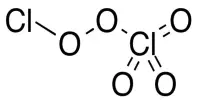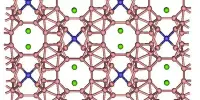Molybdic acid is a term used to describe hydrated forms of molybdenum trioxide and related compounds. It is a hydrated form of molybdenum trioxide (MoO3) that is also known as molybdenum oxide hydrate. The monohydrate (MoO3•H2O) and dihydrate (MoO3•2H2O) are widely known. They are diamagnetic yellow solids. It is not a well-defined, pure substance, but rather exists in a variety of hydrated forms depending on the preparation and use conditions.
Molybdic acid can be made by either dissolving molybdenum trioxide (MoO3) in water or reacting molybdenum compounds with acids. Depending on its hydration state, it is usually found in the laboratory as a white or pale yellow solid.
Properties
- Chemical formula: MoO3·H2O
- Molar mass: 161.95 g mol−1
- Appearance: white crystals (anhydrous); yellow crystals (monohydrate)
- Density: 3.112 g/cm3 (anhydrous); 3.124 g/cm3 (monohydrate)
- Melting point: 300 °C (572 °F; 573 K)
- Solubility in water: 1510 mg dm−3 Soluble in 10% ammonia 35gm/lt
- Crystal structure: hexagonal (anhydrous); monoclinic (monohydrate)
Structure of the solids
Molybdic acid solids are coordination polymers. The monohydrate MoO3•H2O is made up of layers of octahedrally coordinated MoO5•(H2O) units that share four vertices. The dihydrate (pictured above) has the same layer structure as the hydrate, but with a “extra” H2O molecule intercalated between the layers.
Structure of molybdic acid in solution
The combination MoO3(H2O)3 is seen in acidified aqueous solutions of molybdic acid. Molybdenum assumes octahedral molecular geometry once more, most likely with three oxo ligands and three aquo ligands.
Molybdates are the salts of molybdic acid. They are formed by adding base to molybdic acid solutions.
Applications
Many molybdenum oxides are used as heterogeneous catalysts, e.g. for oxidations. Molybdic acid and its salts are used to make the Froehde reagent for the presumptive identification of alkaloids.
It is used in various chemical reactions and analytical techniques. For example:
- Analytical Chemistry: It is used in the qualitative and quantitative analysis of phosphates and other anions in analytical chemistry. When it reacts with certain ions, it forms distinctive colored precipitates, which can be used as indicators in chemical analysis.
- Catalysis: Some molybdic acid compounds are used as catalysts in various chemical reactions, including the oxidation of organic compounds.
- Corrosion Inhibition: Molybdic acid and its salts are sometimes used as corrosion inhibitors to protect metal surfaces from corrosion.
- Inorganic Synthesis: It can be a precursor for the synthesis of various molybdenum compounds and materials.















